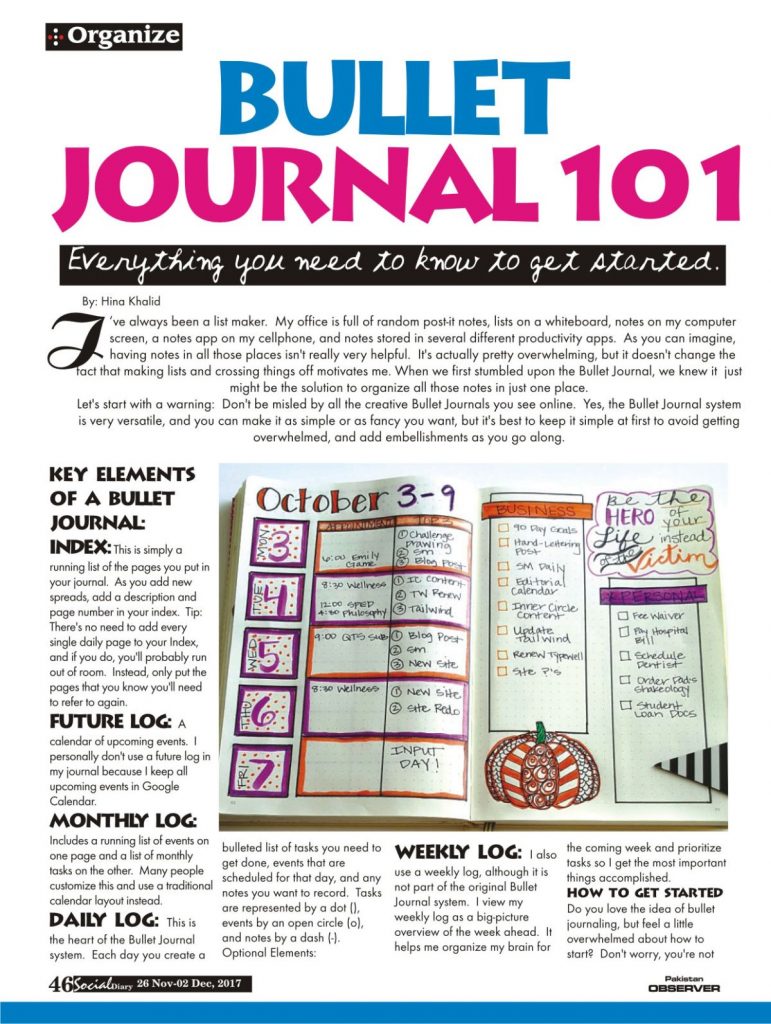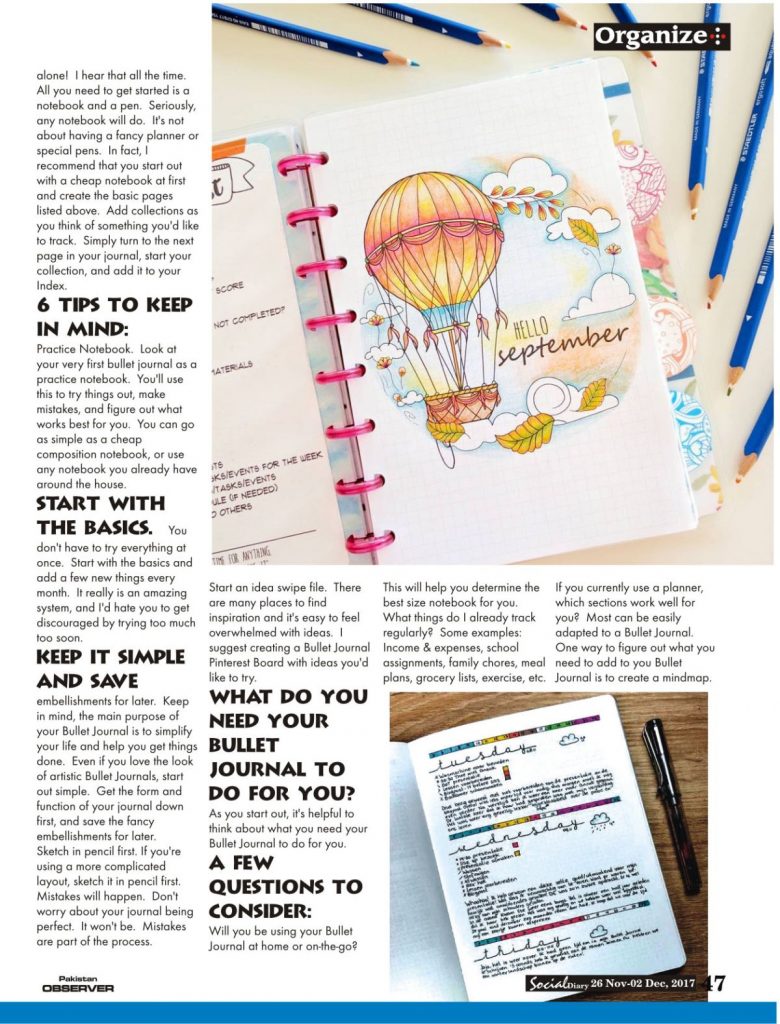I’ve always been a list maker. My office is full of random post-it notes, lists on a whiteboard, notes on my computer screen, a notes app on my cellphone, and notes stored in several different productivity apps. As you can imagine, having notes in all those places isn’t really very helpful. It’s actually pretty overwhelming, but it doesn’t change the fact that making lists and crossing things off motivates me. When I first stumbled upon the Bullet Journal, I knew it just might be the solution to organize all those notes in just one place.
Let’s start with a warning: Don’t be misled by all the creative Bullet Journals you see online. Yes, the Bullet Journal system is very versatile, and you can make it as simple or as fancy you want, but it’s best to keep it simple at first to avoid getting overwhelmed, and add embellishments as you go along.
Key elements of a Bullet Journal:
INDEX: This is simply a running list of the pages you put in your journal. As you add new spreads, add a description and page number in your index. Tip: There’s no need to add every single daily page to your Index, and if you do, you’ll probably run out of room. Instead, only put the pages that you know you’ll need to refer to again.
FUTURE LOG: A calendar of upcoming events. I personally don’t use a future log in my journal because I keep all upcoming events in Google Calendar.
MONTHLY LOG: Includes a running list of events on one page and a list of monthly tasks on the other. Many people customize this and use a traditional calendar layout instead.
DAILY LOG: This is the heart of the Bullet Journal system. Each day you create a bulleted list of tasks you need to get done, events that are scheduled for that day, and any notes you want to record. Tasks are represented by a dot (•), events by an open circle (o), and notes by a dash (-).
Optional Elements:
WEEKLY LOG: I also use a weekly log, although it is not part of the original Bullet Journal system. I view my weekly log as a big-picture overview of the week ahead. It helps me organize my brain for the coming week and prioritize tasks so I get the most important things accomplished.
How to Get Started
Do you love the idea of bullet journaling, but feel a little overwhelmed about how to start? Don’t worry, you’re not alone! I hear that all the time.
All you need to get started is a notebook and a pen. Seriously, any notebook will do. It’s not about having a fancy planner or special pens. In fact, I recommend that you start out with a cheap notebook at first and create the basic pages listed above. Add collections as you think of something you’d like to track. Simply turn to the next page in your journal, start your collection, and add it to your Index.
6 Tips to keep in mind:
Practice Notebook. Look at your very first bullet journal as a practice notebook. You’ll use this to try things out, make mistakes, and figure out what works best for you. You can go as simple as a cheap composition notebook, or use any notebook you already have around the house.
Start with the Basics. You don’t have to try everything at once. Start with the basics and add a few new things every month. It really is an amazing system, and I’d hate you to get discouraged by trying too much too soon.
Keep it simple and save embellishments for later. Keep in mind, the main purpose of your Bullet Journal is to simplify your life and help you get things done. Even if you love the look of artistic Bullet Journals, start out simple. Get the form and function of your journal down first, and save the fancy embellishments for later.
Sketch in pencil first. If you’re using a more complicated layout, sketch it in pencil first.
Mistakes will happen. Don’t worry about your journal being perfect. It won’t be. Mistakes are part of the process.
Start an idea swipe file. There are many places to find inspiration and it’s easy to feel overwhelmed with ideas. I suggest creating a Bullet Journal Pinterest Board with ideas you’d like to try.
What do you need your bullet journal to do for you?
As you start out, it’s helpful to think about what you need your Bullet Journal to do for you. A few questions to consider:
Will you be using your Bullet Journal at home or on-the-go? This will help you determine the best size notebook for you.
What things do I already track regularly? Some examples: Income & expenses, school assignments, family chores, meal plans, grocery lists, exercise, etc.
If you currently use a planner, which sections work well for you? Most can be easily adapted to a Bullet Journal.
One way to figure out what you need to add to you Bullet Journal is to create a mindmap. Identify key areas of your life and things that would be helpful to include in your journal.












